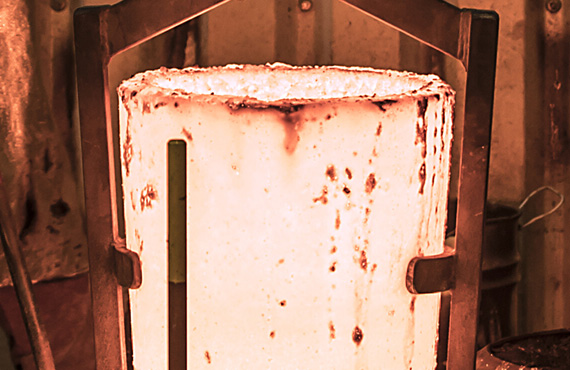Casting heat treatment is a type of thermal treatment applied to improve the physical and chemical properties of metal cast products. This process is used to enhance the structural strength of cast parts, reduce internal stresses, improve corrosion resistance, and achieve the desired mechanical properties. Casting heat treatment consists of a series of temperature-controlled processes to ensure that the cast products are more efficient, safe, and durable.
Casting Heat Treatment
What is Casting Heat Treatment?
Application Process of Casting Heat Treatment
Casting heat treatment generally consists of several key stages. These stages may vary depending on the material properties and the desired outcome.
- Heating: The casting material is heated to a specific temperature range. This temperature may vary depending on the type of material and the desired properties. The heating process is typically performed slowly to ensure the material heats up uniformly. Once the desired temperature is reached, the material is held at this temperature for a sufficient amount of time to allow for the proper reorganization of its internal structure.
- Soaking Time (Cooling/Heating Time): After heating, the material is typically held at this temperature for a specific period. This stage allows the material's microstructure to change and helps the crystals to reorganize. The duration of this stage varies depending on the material type and the desired properties. This stage ensures that the internal structure of the material becomes homogeneous, resulting in a more durable and stable structure.
- Cooling: The final stage is the controlled cooling of the casting material. The cooling rate can directly affect the mechanical properties of the material. Some materials may be rapidly cooled, especially to achieve higher hardness and durability, while others may undergo a slower cooling process. Cooling is typically performed using various environments such as water, oil, or air.
- Fast Cooling (Quenching): This method is used to increase the hardness of the material. Fast cooling is typically done using cooling environments like water or oil. This process increases hardness and durability, especially in alloys like steel.
- Slow Cooling (Annealing): This method is used to make the material softer and more workable. Typically, cooling is done at low temperatures in a controlled atmosphere.
- Final Processing: After the heat treatment, some additional processes may be applied to the material. These processes may include grinding, polishing, or surface treatments. The final processing improves the physical properties of the material or achieves the desired aesthetic outcome. Additionally, the hardness and durability of certain cast materials can be enhanced with surface coatings or protective coatings.
Which Materials is it Used On?
Casting heat treatment is typically applied to casting materials such as cast iron, steel, aluminum, and nickel alloys. It is especially common in materials like cast iron and high-alloy steels. The microstructure and internal stress issues that occur during the casting process of these materials are corrected through heat treatment.
| Cast Iron: Cast iron, as a good casting material, can be made more durable through heat treatment. |
| Steel: The hardness and durability of steel castings can be increased with casting heat treatment. |
| Aluminum Alloys: Lightweight and durable aluminum alloys can be processed through casting heat treatment to make them stronger and more robust. |

Advantages of Casting Heat Treatment
- Improvement of mechanical properties: The hardness, durability, and elasticity of casting materials are increased. This process is particularly important in applications where high load-bearing capacity is required.
- Reduction of internal stresses: Internal stresses that occur in the material during the casting process can cause cracking and deformation. Casting heat treatment reduces these stresses, improving the material's stability.
- Improvement of surface properties: This process corrects surface defects of cast parts, resulting in a smoother surface. A smooth surface also enhances the material's machinability.
- Corrosion resistance: Casting heat treatment strengthens the surface of the material, making it more resistant to external factors such as corrosion and oxidation.
Main Industries Using Casting Heat Treatment
Casting heat treatment is widely used in many industrial fields. This process plays an important role, especially in applications requiring high safety and durability standards.
- Automotive: In the automotive industry, casting heat treatment is applied to cast parts such as engine components, chassis elements, and brake discs. This process enhances the performance and safety of vehicles.
- Aerospace and Space Industry: In the aerospace sector, where cast parts require high-temperature resistance and reliability, casting heat treatment is used in aircraft engines and other critical components.
- Machine Manufacturing: Casting heat treatment is commonly used for machine parts that require high durability and mechanical properties. Such parts are frequently found in construction machinery and industrial equipment.
- Energy Sector: Most equipment used in power plants and other energy production facilities is made from casting materials, and these materials are improved in terms of durability and performance through heat treatment.

